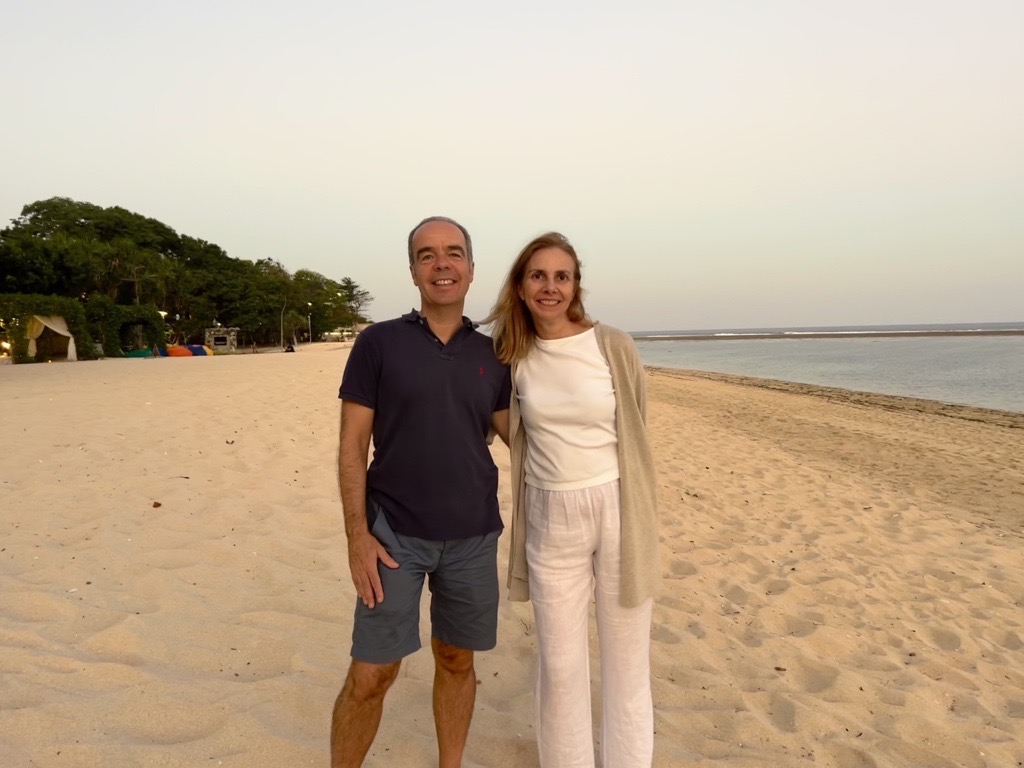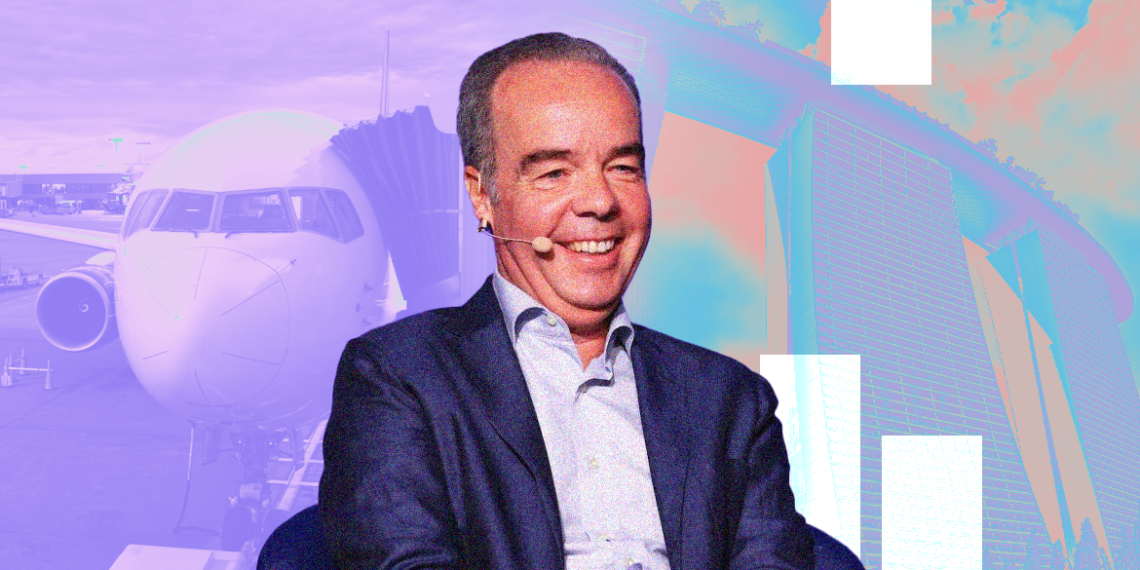Creation platform, AI chatbot for corporate bookings, payments – Amadeus continues in quest to simplify travel
It’s just slightly over a year since this veteran in air distribution moved to Singapore to head up Asia Pacific for Amadeus. He came in at a time of “the renewal of travel” in the region. With the region fully opened, what lessons has he learnt, what insights can he share, in particular, about the volatile and dynamic air distribution market, with the acceleration of NDC adoption by airlines in APAC, and what other projects is Amadeus working on to simplify travel? Yeoh Siew Hoon speaks to Javier Laforgue, Executive Vice President, Travel Unit & Managing Director, Asia Pacific, Amadeus, at WiT Singapore 2023.
Javier Laforgue on NDC: “The last comparable step change in the airline industry was the elimination of the paper ticket, and that took 15 years.”
Q: It’s been a year since you moved to Singapore. What have your impressions been?
I am from Spain, and although I had travelled in APAC before both for business and leisure, this is the first time I actually live here, and I can tell you that there is a big difference between living and passing-by. The first thing you realize is that Asia is larger than you thought and way more diverse. But at the same time, there are some interesting commonalities:
- Focus on technology innovation, for everything, including regular day-life matters.
- Focus on growth, quality and efficiency.
- The fact that things happen at very fast pace.
- The entrepreneurship spirit
People are nice and warm, people in restaurants, hotels, street, at the office, customers, even our competitors are nice. Regarding customers, something that I have noticed and perhaps is not so common elsewhere is that they are very explicit on recognizing the value Amadeus brings. It doesn’t mean they are not demanding, which they are, it is that they also highlight the value and appreciate the partnership.
I can tell you that my first year in APAC has been a personal revolution. At this stage of my life, to come to live in APAC just with my wife, leaving our adult kids in Europe, it feels like being boyfriend and girlfriend again in an exotic location, it is great and we are enjoying it very much.
Q: Amadeus has been making great inroads into North America. How is it doing in APAC?
Travel in APAC is back. APAC was the first region to stop traveling and the last one to fully recover (in accounting terms, FILO, first in, last out).
The recovery is not homogeneous because there are some markets like India that are booming whilst others, such as Japan, are evolving at a slower path because international travel recovery is lagging a bit. The good thing is that all markets are growing and the trend is stable and has solid fundamentals.
Well, we are doing very well, as we are experiencing this recovery. Our volume of transactions is growing by more than 100pc vs last year and every month we see a new high.
We are also expanding our business with existing and new customers, and I am particularly pleased that we are successfully contracting new business in diversification domains such as payments and airports, where we have announced a couple of landmark agreements recently.

“My first year in APAC has been a personal revolution. At this stage of my life, to come to live in APAC just with my wife, leaving our adult kids in Europe, it feels like being boyfriend and girlfriend again in an exotic location, it is great, and we are enjoying it very much.”
Q: I know Amadeus is all about simplifying complexity, so it’s a good time because and is definitely getting more complex, ironically the more tech, the more complex for humans, and then we need tech to simplify it for humans. Let’s talk about what’s getting more complex. First, airline retailing and NDC – you were heading global air distribution before your move to Singapore. Is this truly a step-changing moment?
I think that travel retailing is changing for the good by incorporating some of the capabilities and processes that have been normal in other sectors since years. With these new capabilities, that will be enabled by NDC.
Travelers will enjoy more flexibility with tailored choices for product and services. Airlines have full control over their offer and will have the more chances to differentiate and strengthen their brands. Travel Sellers will be able to offer more choice, and highest level of service for travelers.
And this transformation is happening for real, but it will be gradual and take time, as it requires 1) investment and 2) change management.
And also, as travel is an interconnected ecosystem, there is a need to manage the transition because, for some time, you will have players in both the new and the old world. And that is precisely what we are doing in Amadeus. We are fully embracing NDC and the new technologies, but we are also maintaining the old (for example in our NDC X, which is our NDC solution for distribution to Travel Sellers, in one single search we return both NDC and old EDIFACT options).
At this moment, we are live with 22 airlines in NDC X and we see a fast-growing uptake, but still from a very low base. Having said that, there are a couple of airlines that are doing more than 20% of their sales in Amadeus via NDC X. That is a material degree of adoption.
In the meantime, we continue to invest, and we are committed to supporting our customers in the transition and try to make it as easy and seamless as possible for them. So, coming back to the concept of simplification – we want to make the transition to new retailing simple.
Q: Care to take a guess as to when EDIFACT will disappear?
This is difficult to say, because, as I explained before the industry is interconnected, and there are many players. The last comparable step change in the airline industry was the elimination of the paper ticket, and that took 15 years.
Finnair declared in 2021 that they will be all-NDC by 2025. That is fine and we are working with them to help them achieve that goal. But what happens when they sell an interline itinerary with an airline that has not adopted NDC?
We will be leaving in a hybrid world for quite some time, and this is where technology players like Amadeus will play a key role in supporting the industry handling this transition effectively and without losing efficiency or scale.
Q: What’s the next step change to come? Digital identity? Airports?
Airports will see many changes. We are all dreaming of a seamless airport processing experience, arrival, facial or thumb recognition, check in, baggage, immigration, security, boarding. Biometrics is and will continue to be a key driver of innovation, with digital identity management helping the industry to build a contactless end-to-end passenger experience.
We are already powering some of the good examples in the APAC region of how biometrics is bringing value and improving the customer experience: we are the engine behind the biometric enabled touchpoints in Perth, Tokyo Narita or Hong Kong, where our kiosk solution enables passengers to be enrolled into the Airport Authority of Hong Kong’s Flight Token service – one of the most comprehensive and widely praised implementations of the IATA OneID program.
Q: In that journey towards building that end to end, A-Z platform, what stage are you at?
Our vision is what we call the ‘Creation Platform’ an open and cloud-based ecosystem where airlines, travel sellers, corporations, airports, hotels, payments businesses and other travel players will be running on the same unique platform. The platform will enable them to collaborate and to interact amongst themselves and with third parties such as IT players.
Building a seamless end-to-end traveler experience requires the collaboration of many actors is this is precisely what the creation platform will enable.
Q: AI, that’s the next step change in travel. How many engineers are working on it? And what role will it play?
We have thousands of engineers around the world that in one way or another are working on Generative Artificial Intelligence, which is the type of AI that can create original content such as text, images or other. This technology brings a huge opportunity to deliver more value to the traveler and to the travel industry players. And best way to illustrate this is to mention a couple of examples, of the over 100 use-cases we are working on. We are enhancing our corporate self-booking tool with an AI-powered chatbot which will make the booking and servicing process of corporate travel more efficient. On the e-commerce domain, we are working on a tool that will generate at scale personalized landing pages, all powered by AI. And we are also introducing some new features for the professional users of some of our existing products, for example an AI-powered digital assistant for the users of our airline Revenue Management system.
Q: Any other step change, complexity to solve?
I believe that Payments is another good example. Travel has many particularities which result in many challenges. For example, once travel is consumed, it doesn’t exist anymore. We have recently created an independent company, Outpayce, regulated by the Bank of Spain, to provide payment solutions for travel. Its tagline is “Travel, simply paid”.
We believe that we can play an important role and help the travel industry players pay and get paid efficiently and safely. To achieve that we have integrated our own payment solutions, as well as the solutions from third parties, with our backbone IT infrastructure. This is our forte.
Q: Which brings us back to simplicity – you like to simplify things, don’t you?
Yes, and sometimes I take that a bit too far. For example, as my name is difficult to pronounce and spell in Asia, when I go to Starbucks or make reservations at restaurants, I use John Smith. Simpler for everyone.
Q: So that’s the primary role of humans in the future of travel? To make it simpler for our customers?
I personally believe that when you travel, there is always an emotional component. Travel is about experiencing new things, meeting new people, strengthening ties…there are a lot of emotions in that. And that is in my opinion the role of humans, fostering the sentiments and the emotions of travelers.
Technology and systems allow to transact and help make a better experience, but the human touch is irreplaceable to get the most out of it.




